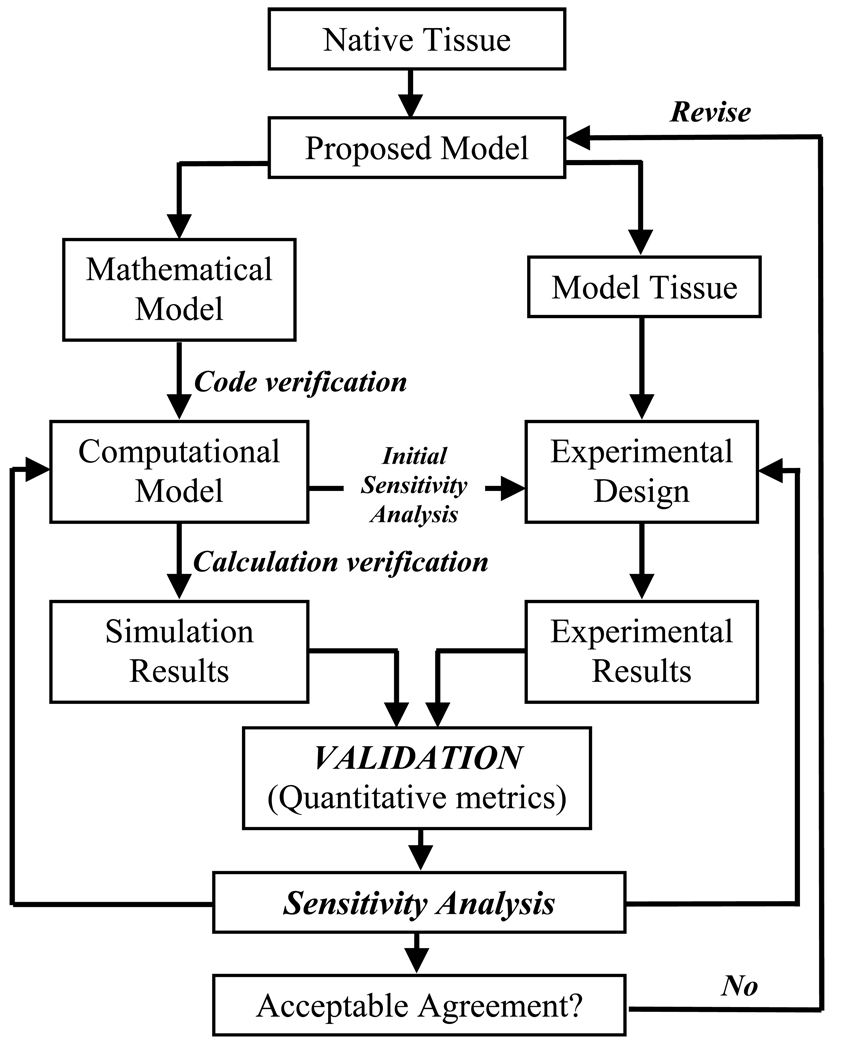Figure 1.
Flow of the verification and validation process in computational biomechanics. Verification solves the mathematical model and ensures it is implemented correctly (code verification) and provides acceptable solutions to benchmark problems (calculation verification). Initial computational solutions provide indicators of which parameters are critical in the model formulation (sensitivity analysis) and these can be used in the design of validation experiments. Validation is used to quantify the model’s ability to describe the experimental outcomes of the physical system given well defined boundary conditions. Sensitivity analysis is used again to determine the degree to which input parameters influence the solution output. The process is iterative until the model and validation experiments provide reasonable agreement within preset acceptance criteria. Adapted with permission from ASME Committee (PT60) on Verification and Validation in Computational Solid Mechanics (2006).

